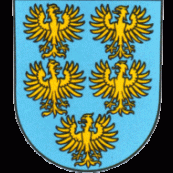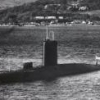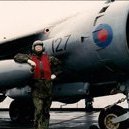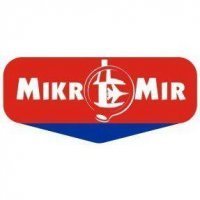Search the Community
Showing results for tags 'Mikro mir'.
-
As you may have noticed, my dad´s at a little armour spree. Now he dug out this Mikro Mir kit which he already started longer ago but lost the fun with it. The openings for the swing bars look half round but should be round, because the insert parts are. There´s no alignement help for the bars. So it´s gonna be tricky to get the angles right so that the track will fit in the end. DSC_0007 by grimreaper110, auf Flickr DSC_0008 by grimreaper110, auf Flickr DSC_0009 by grimreaper110, auf Flickr DSC_0010 by grimreaper110, auf Flickr
-
I reckon I might get this one done as I only have one other build on at the moment and that is at the painting stage. So what better than the AW52 'Flying Wing'. This was designed at the end of WW2 to test out theories around laminar air flow. To get a higher speed, jet engines were used (although top speed was disappointingly below what was expected)and a tailess swept flying wing shape was used as that was fashionable (the DH108, early Comet studies and some 'V' bomber designs all looked at tailess designs). Two AW52s were built, the first flying in November 1947. One crashed, giving its pilot the dubious distinction of the first pilot to use a martin-Baker ejection seat. The other was broken up in 1954. Laminar flow was rarely achieved as any surface irregularity, like a dead insect, broke the flow up. The Mikro Mir kit is a shortish run affair in grey injection moulded plastic with a small largely redundant PE sheet and some 3D decals for the cockpit. No resin or canopy masks and only a small decal sheet is provided for both white painted airframes. The kit surface detail is good, and both engines are sort of provided in full. Not enough combustion chambers are provided, but it doesn't matter anyway, as the engines are buried deep in the wings. The detail provided for the engines is a bit overkill in my opinion. There is some flash on the parts and very little in the way of assistance to fit parts together. The instructions sometimes depict parts that are not moulded as shown. This is going to be interesting. So far, some parts stuck together. Virtually all needed some fettling to fit together. Good job the model will be one colour, even if it is white.
-
This is a build that has finished after being started in the Prototypes, Special Schemes etc GB. The AW52 was built to test the feasibility of the flying wing planform and also laminar flow, for a projected flying wing airliner. Two were built, the first one flew in late 1947 and crashed in May 1949, the pilot John Lancaster, becoming the first British pilot to make an emergency ejection. This airframe, TS363, being the depicted by the model. The kit is by Mikro Mi,r is a bit of a curates egg, but eventually built up into quite an imposing model. The WIP is here
-
Here is my representation of HMS Courageous, a Churchill Class submarine of the Royal Navy using the recently released Mikro Mir kit of HMS Conqueror in 1/350. Built half OOB as I like the waterline look of my maritime. The only extra work done was adding the side vents and correcting the white draught marks to red, oh and adding an extra set of draught marks to the forward edge of the rudder. Depicting the boat as 'crossing the line' in 1981(ish). Short build log here: Stuart
- 33 replies
-
- 45
-

-
Hello! New items from Ukrainian manufacturers Mikro-Mir NEW 48-020 DH.112 Venom De Havilland fighter-bomber scale 1/48 35-027 Mikro Mir Dictator 13 inch Seacoast Mortar scale 1/35 ICM NEW DS7203 Soviet military airfield 1980s 72203 Ki-21-Ib Sally 48304 OV-10A Bronco US Navy 35136 Unimog 404 S “Koffer” 35716 s.Gr.W.34 WWII German mortar 32117 Pilots of the Soviet Air Force 1943-1945 New items from Ukrainian manufacturers https://amarket-model.com/ https://www.facebook.com/people/A-market-scale-model
-
- 2
-

-
- Amarket-model.com
- Mikro Mir
-
(and 1 more)
Tagged with:
-
Hi All, After completing a couple of stalled aircraft builds, it's time to get back to the maritime builds, not the Fushimi Maru as expected but this most recent arrival of a Churchill Class Submarine in 1/350 by Mikro Mir...FANTASTIC! The mandatory stuff... The box art. Hull sprue and base. The other sprue with the upper casing, sail, planes and masts. Also a PE propeller and some decals. Instructions As you can see, like most submarine kits, it has very few parts, so that means it'll be a quick build right... The box art and decal option is for HMS Conqueror, sister to HMS Courageous but seeing that I served on Courageous, it'll be her that I shall be doing, not that there is any difference except the flying of the 'Jolly Roger'. I have to thank @maarten.schonfeld for helping Mikro Mir and @Terry1954 for also helping to bring it to my attention. Stuart
-
Besides the Ark Models La-11 my dad will aslo start this La-9. doing the box art scheme. Ark Models produces a La-9 too and Mikro Mir a La-11. Hobby Boss has announced both types for 2021. Guess the latter ones would be the easiest to build but nothing about a little challenge 😄😉 DSC_0008 by grimreaper110, auf Flickr
-
G'day people, This has been an on again off again subject. I like the shape of the boat and the inclusion of the two Dry Deck Shelters (DDS) is an interesting feature. The USS Kamehameha is a Benjamin Franklin Class submarine that has been converted for Special Forces SF operations and so avoided decommissioning (although now retired) along with the other BF class boats. The kit is typical Mikro Mir and they have done a good job overall. A small but useful PE fret is included for the screw and some conning tower details. From what I have read by those more knowledgeable than myself (which is most people!!), the biggest issues to correct are at the back end. the rear dive planes are a little short in chord and the fixed portion lacks the prominent vertical end plates which were specific to the BF boats. Progress was rapid however, the fit was not great. As I said, this is a typical MM kit which means you do not have a great deal of alignment aids and surprisingly, only a modicum of filler was used to remediate the hull seam which is split into two horizontal parts. The separate upper casing however was another story. Whilst the fit at the rear was acceptable, the forwards profile did not have any gaps but it did have a significant step to the hull. The real deal blends more gradually and this required much sanding and blending with putty to achieve a good fit. I managed to lose the passive sonar dome, I threw it out thinking it was just excess mould material. I ended up scratching a new one from some scrap resin off cut. MM supply a small curved part fro the conning tower windows -which I promptly broke. I ended up using some clear plastic sheet from a CD jewel case instead. This was cemented in place then sanded to shape and successively sanded and polished back to clarity To correct the dive planes. I added some plastic stock to the dive planes and sanded to shape. I also filled in the hinge slot as this was incorrect. That's all for now, thanks for looking, cheers, Pappy
-
I was inspired to start this thread by the build of Unkempt. I started working on this crazy aircraft few days ago and it was very interesting build so far. Sanding the trailing edge with file was quite thrilling and the CA Glue was used very often for filling gaps. My plan is to do the dirty work first and than focus to the interior. Exeption is just the engine and wheels, which are ready to paint by now. I wasn´t satisfied with the wing lift of the kit, it seemed to me be quite uplifted, so I sanded the wings attachment area to more flat wing lift. Maybe it´s overdone it a little bit, but I like it more that way (and the trailing edge is continuous too). The "dorsal fin" is only laid unglued. I hope you´ll like it. Cheers, Andrew S.
-
Hello fellow modellers, finally there is this rare occasion in the space-time continuum when the wife and kids are away, I don't have to work and I find enough will power to start a kit, so let's start while motivation is at max level....I think you are all familiar with the kit, it's the... i tried every possible way to upload the pic....does it work?
-
USS Daniel Webster Mikro Mir 1:350 The contract to build Daniel Webster was awarded to the Electric Boat Division of General Dynamics Corporation in Groton, Connecticut, on 3 February 1961 and her keel was laid down there on 28 December 1961. She was launched on 27 April 1963, sponsored by Mrs. W. Osborn Goodrich, Jr., and commissioned on 9 April 1964, with Commander Marvin S. Blair in command of the Blue Crew and Commander Lloyd S. Smith in command of the Gold Crew. Webster was originally built with diving planes mounted on a "mini-sail" near the bow, leading to her nickname "Old Funny Fins". This configuration, unique to US submarines, was an attempt to reduce the effect of porpoising. While successful, the "mini-sail" required to contain the operating mechanism reduced hydrodynamic efficiency and lowered her overall speed. During a mid-1970s overhaul, these unusual planes were removed and standard fairwater planes were installed. She was decommissioned on 30 August 1990 and struck from the Naval Vessel Register the same day. She was converted to a moored training ship (S5W Prototype facility) by the Charleston Naval Shipyard at Charleston, South Carolina. Upon completion and designated MTS-626, she was towed up-river to her permanent berth at the Naval Nuclear Power Training Unit Charleston. The Model This kit has been out a little while now but this is our first look at it. The kit comes in the familiar coloured top opening box, inside of which the kit parts are safely held in a poly bag. Considering the size of the completed model, there are very few parts, making it a great kit to start with if you thinking of making a selection of submarine models. The grey styrene is not as soft as some short run kits I’ve come across and the moulded details, such as the silo doors, are very nicely moulded. The two hull halves are cut vertically rather than the standard horizontal seen in most other kits. This makes the modelling of a waterline diorama so much easier. If making the model as full hull the two halves are glued together and the join line filled and sanded as necessary. The single piece silo section is then glued to the upper hull, followed by the four part sail assembly, consisting of two sail halves, clear screen for the front of the sail, sail top and internal floor, being attached to the forward end of the silo section. The sail is provided with three periscopes which are fitted to the top of the sail. The forward sail, which was a distinctive feature of this boat is made up from two halves and is fitted with the two forward dive planes, before being attached to the bow. The upper and lower rudders and the aft dive planes are then attached to the rear of the hull, followed by the etched propeller. With the boss in place, the blades must be twisted carefully to shape, which is shown in the instructions, but you might get better results by finding a photograph of them on the internet or your library. Decals The small decal sheet provides the boats ID number, fitted to the fin, its name plate, fitted to the aft section of the missile silos, depth markings and escape hatch and bollard markings. The decals look suitable opaque and in register with very little in the way of carrier film. But still best use on a glossy base. Conclusion As with the other boats released in this scale, this is great looking kit and even though it’s short run, it does build into a really nice model, as can be seen in the Ready For Inspection section on this very forum. Mikro Mir should be congratulated for releasing these esoteric boats. Review sample courtesy of
-
Add to this the photoetching
- 7 replies
-
- 2
-

-
- GermanI submarine
- Type XVII
-
(and 2 more)
Tagged with:
-
Vickers Valiant. 7 Sqn. RAF Honington 1961. 1:144 Mikro Mir Second in my planned group of the 3 'V' bombers is the Valiant. Well known as the first of the trio to both enter and leave service, it was the simplest of the three, but no less attractive. Doing them in 1:144 is more practical than 1:72 for space reasons, and they also make an interesting comparison with my airliners. The kit is from Mikro Mir, and has more of a 'limited run' look to it than the Victor and Vulcan from Great Wall Hobby. It requires a little more care and preparation than the other 2, but is a perfectly buildable model. A brass etch fret provides several detail parts. I used the wing fences as patterns to make copies from plasticard, and also the vortex generators on the outer wings. The only reason for this is that I believe that a stronger bond is possible with plastic-to-plastic than brass-to-plastic, but the kit parts are perfectly good. Lovely box art too! Could go without a shot of the 2 completed so far; along with next one to head for the workbench. Although it is the tanker boxing, it also contains all parts & decals for a Black Buck version. Thanks for looking, John
- 23 replies
-
- 39
-

-
Typhoon Class Submarine Mikro Mir 1:350 Built primarily for long missions under the polar icecap, the sheer size of the Typhoon, known indigenously as the Akula Class, was simply mind blowing. She was half the length of an Nimitz class aircraft carrier and about 2/5ths its displacement. A submerged Typhoon was said to reach 48,000 tons, while its western equivalent, the almost as long Ohio Class "boomer," displaced "just" 19,000 tons. The Typhoon's massive tonnage comes from the fact that they were basically two Delta Class submarine hulls mated together and built outward from there. They could carry 20 R-39 SLBMs, each with 10 multiple re-entry vehicle (MIRV) warheads. In other words, this submarine could rain two hundred nuclear warheads down on western cities and military installations in a single barrage. Seeing as the ship was designed with Arctic patrols in mind, she could break through the ice and fire all of her missiles while surfaced if need be. Additionally, she possessed six 533mm tubes that were capable of launching Type 53 torpedoes and SS-N-15 "Starfish" cruise missiles, although these were tertiary capabilities in comparison to her primary mission as a nuclear "second strike" deterrent. What made the Typhoons even more threatening was that they were among the quietest vessels ever built by the USSR, and they were fast, capable of hitting around 28kts underwater. In effect, tracking these suckers was a top priority for NATO, and especially the US, and it was not that easy for America's silent service to do so. Additionally, these ships were prime targets on America's nuclear hit lists while in port as they could launch their missiles even while tied up to the dock if the orders to end the world as we knew it were ever given. In the end just six Typhoons were built during the 1980s, and most were withdrawn from service within a decade and a half of their christening. Today a single boat, the first of her class, the Dmitriy Donskoy, is still in service, acting partially as a missile development test boat as she was updated and converted to carry the newest Russian SLBM, the RSM-56 "Bulava." The two other remaining Typhoons that were still in Russia's reserve inventory are being scrapped as the cost of refitting and operating them is deemed too high. In their place, the more streamlined, efficient and cost effective Borei Class, although not necessarily cheaper to build, and its second generation derivative, which were designed around the RSM-56 SLBM, will solidify its grim role as Russia's primary second strike nuclear deterrent. Interestingly enough, before the final decision was made to scrap all but one of the remaining Typhoons, the shipyard that originally built them was floating some pretty wild concepts in an attempt to see that they were refurbished and put back into active service. Some of the ideas proposed were to refit the ships as natural gas, oil and cargo transports capable of delivering large quantities of stores to Russia's most northern outposts. The Model This is my first look at a Mikro Mir kit in its raw state and I have to say initial impressions are pretty good. The kit comes in a colourful top opening box with what looks like an actual photograph of a Typhoon on the lid. Inside there are four hull sections, two smallish sprues and two separate parts for the fin all in a light to medium grey styrene. Also included are two small etched sheets, a tiny clear styrene sprue and a sheet of decals. On initial inspection the details are nicely moulded, but be aware that this is more like a limited run kit and as such will require a bit more fettling and fitting than a model from one of the larger mainstream manufacturers, it is not a shake and bake. This is particularly seen in the fitting of the hull sections which come in separate bow and stern sections for both upper and lower hulls. Some careful sanding will be needed to get all the parts to fit nicely, but try not to sand too much otherwise you will lose some of the moulded detail. Unfortunately the instructions are little on the small side and I found the easiest way to view them was to scan them into the computer and blow them up, certainly helps with identifying where the smaller parts go. The best way to construct this kit will be to glue the bow and stern sections of the upper and lower hulls before attaching the now two halves, (horizontally), together. With the hull sections glued together there are several fittings to be attached to the lower hull, these include the keel strakes, two, what I can only presume are water intakes, each consisting of two halves, the two piece rudder onto which two PE strakes are fitted per side, and two other parts, fitted aft of the water intakes, which I cannot identify. Turning the sub over the upper hull is fitted with the tower/fin, which is provided in two halves, is assembled, with a floor section sandwiched between them about two thirds of the way up the fin. The small brass parts that make up the antenna/periscope wells are fitted before closing up along with the clear parts that make up the front windows. The fin is then topped off with a selection of antenna poles and periscopes, and finished by fitting the PE handrails around the base. The upper rudder is of the same construction as the lower and once fitted into position two similarly unidentifiable parts to those on the underside are glued into place, followed by the two bowplanes. The two propellers are each made up of individual PE blades glued onto the styrene propeller boss, which is then completed by the fitting of four small strakes into the front of the boss. Once assembled, the two propellers can be glued into place. The two single piece sternplanes are fitted with inner and outer PE plates before being glued into position aft of the propellers which are then enclosed by upper and lower cowl sections. Finally two rounded plates are fitted to the outside of each of the aft horizontal planes, completing the build. A small stand is provided to mount the model on, or you can provide your own method of display. Decals The small decal sheet provides quite a lot of markings for the submarine, mostly for the individual hatches and openings, but also for the escape/access hatches which are provided as two parts to improve the opacity of the white sections. There are also depth marks for the bow, amidships and stern plus two Russian Ensigns. Although marked MikroMir, the decals have a Bergamot feel about them which may or may not be a good thing. Once again I scanned the decal placement sheet into the computer which helped a lot in identifying where the decals go. Conclusion This is a very interesting kit in that it may take a little longer to put together, requiring a little more patience and care with the fit, but at the end of the day you will have a very nice, and accurate model of the imposing Typhoon class submarine. Having seen a couple of completed models they really do stand out from the crowd. Highly recommended. Review sample courtesy of
-
Is pleased to present a new model in 1/48 scale.
-
USS George Washington Mikro Mir 1:350 USS George Washington (SSBN-598), the lead ship of her class of nuclear ballistic missile submarines, was the third United States Navy ship of the name, in honour of George Washington (17321799), first President of the United States, and the first of that name to be purpose-built as a warship. The boats keel was laid down at Electric Boat Division of General Dynamics, Groton, Connecticut on 1 November 1957. The first of her class, she was launched on 9 June 1959 sponsored by Mrs. Robert B. Anderson, and commissioned on 30 December 1959 as SSBN-598 with Commander James B. Osborn in command of the Blue crew and Commander John L. From Jr. in command of the Gold crew. George Washington was originally laid down as the attack submarine USS Scorpion (SSN-589). During construction, she was lengthened by the insertion of a 130 ft (40 m)-long ballistic missile section and renamed George Washington; another submarine under construction at the time received the original name and hull number. Inside her forward escape hatch, a plaque remained bearing her original name. Because the ballistic missile compartment design of George Washington would be reused in later ship classes, the section inserted into George Washington was designed with a deeper test depth rating than the rest of the submarine. The USS George Washington left Groton on 28 June 1960 for Cape Canaveral, Florida, where she loaded two Polaris missiles. Standing out into the Atlantic Missile Test Range with Rear Admiral William Raborn, head of the Polaris submarine development program, on board as an observer, she successfully conducted the first Polaris missile launch from a submerged submarine on 20 July 1960. In 1982, she returned to Pearl Harbor from her last missile patrol. In 1983, her missiles were unloaded at Bangor, Washington to comply with the SALT I treaty. She had made 55 deterrent patrols in both the Atlantic and Pacific oceans in her 25-year career. George Washington continued service as an attack submarine (SSN), returning briefly to Pearl Harbor. In 1983, she departed Pearl Harbor for the last time and transited the Panama Canal back to the Atlantic and to New London. She was decommissioned on 24 January 1985, stricken from the Naval Vessel Registry on 30 April 1986, and scheduled for disposal through the Ship-Submarine Recycling Program at Puget Sound Naval Shipyard. Recycling of the ship was completed on 30 September 1998. The Model Although kits of the USS George Washington have been released in the past, this is the first in the popular 1:350 scale, which is great news for those of us who model in this scale. At last we can have a model of this iconic vessel in out collection. The kit comes in the familiar coloured top opening box, inside of which the kit parts are safely held in a poly bag. Considering the size of the completed model, there are very few parts, making it a great kit to start with if you thinking of making a selection of submarine models. The grey styrene is not as soft as some short run kits Ive come across and the moulded details, such as the silo doors, are very nicely moulded. The two hull halves are cut vertically rather than the standard horizontal seen in most other kits. This makes the modelling of a waterline diorama so much easier. If making the model as full hull the two halves are glued together and the join line filled and sanded as necessary. The single piece silo section is then glued to the upper hull, followed by the five part sail assembly, consisting of two sail halves, sail top and two dive planes, being attached to the forward end of the silo section. The sail is provided with two periscopes which are fitted to the top of the sail. The upper and lower rudders and the aft dive planes are then attached to the rear of the hull, followed by the etched propeller, with a choice of early or late styles and propeller boss. With the boss the in place, the blades must be twisted carefully to shape, which is shown in the instructions, but you might get better results by finding a photograph of them on the internet or your library. Decals The small decal sheet provides the boats ID number, fitted to the fin, its name plate, fitted to the aft section of the missile silos, depth markings and escape hatch markings. The decals look suitable opaque and in register with very little in the way of carrier film. But still best use on a glossy base. Conclusion This is another superb kit from Mikro Mir, and a great addition to any collection. Due to the nature of the real submarines shape it is naturally a very simple kit, which will be good for even the most novice modeller. Yet its still able to be built by the expert modeller who can take that extra time with the painting and more importantly the weathering. Highly recommended Review sample courtesy of
-
Project 641 Foxtrot Class Submarine Mikro Mir 1:350 To replace the first post-war oceanic submarines of Project 611 in the late 1950s in the CDB-18, a new project, designated 641. The chief designer of the project was S. Egorov, then this post he held from 1958 Z. Deribin with 1974 N. Kormilitsin. Project 641 was intended for the same tasks as the project 611: fighting for further communication, minelaying, reconnaissance, anti-submarine action. Compared with the previous project 611 project 641 boats had more autonomy and cruising range, greater depth of immersion, improved weapons and improved living conditions of the crew. The project was considered successful. It was built 75 ships, including 17 for export to the Polish Navy, India, Libya and Cuba. Four boats of the project (B-4, B-36, B-59 and B-130) participated in Operation "Kama" (attempt to break Cuba is in a state of blockade) during the Cuban missile crisis. In 1997, the division of Soviet Black Sea Fleet between Russia and Ukraine Boat Project 641 B-435 was transferred to Ukraine and was named U01 «Zaporizhzhia". The boat was built in Leningrad Novoadmiralteyskom factory. Launched on May 29, 1970. The structure of the Soviet Navy came under the designation B-435 January 20, 1971 and in February 1971 included in the Northern Fleet of the Soviet Navy. Over 20 years of service with the Soviet Navy has made 14 long hikes. Submarine repeatedly patrolled in the Atlantic Ocean, the Mediterranean Sea and the Barents Sea, has been involved in large-scale exercises of the Soviet Navy, attended a friendly visit to Cuba, Morocco, Syria. As of March 2014 was in the U01 ranks, being the only Ukrainian submarine and the only ship of the project 641 are still in service. In 2014, while blocking Russian troops Ukrainian Navy submarine crew offered eight times to the side of Russia, but the proposals were rejected by the sailors. On March 11th entrepreneurs of “Zaporizhzhia" supported the crew, by sending a minivan of food. On March 21st, Russian troops seized the submarine with use of an assault boat. On March 22nd the seized boat, with Russian sailors on board, moved independently to the South Bay of Sevastopol. Currently, the boat is still in occupied Russia Sevastopol. The Model Another very welcome release from Mikro-Mir, especially to all those interested in these boats. The kit comes in a fairly sturdy cardboard box with a photograph of one of the submarine sailing on the surface. Inside the kit is tightly packaged inside a poly bag complete with etch, decals and a simple instruction sheet. As with the other kits, the grey styrene is quite soft, but the details are very finely done. The sprue gates on the hull sections whilst strategically placed where the etched deck is attached, they are also on the joint faces, which will require a bit more careful clean-up. The etched parts are very nicely done with the deck sections looking particularly good. As with most submarine kits construction is very simple. Once cleaned up the two hull halves are joined together and topped off with the four etched deck sections, onto which further etched parts are added along with a styrene pipe. The tower halves are then joined together, sandwiching the periscope and aerial deck. This is then glued into position and fitted out with the two periscopes, two radar poles and two aerial poles. Around the tower etched handrails are attached and will require careful handling after. There are two escape hatches and the upper sonar dome fitted to the deck. Moving aft the sternplanes are attached along with the three propellers and rudder. Forward, the bowplanes are fitted, as is the anchor. Decals The small decal sheet provides quite a lot of markings for the submarine. There are depth marks for the bow, amidships and stern plus markings for the island which include the option of identification numbers for five different boats, all with the same colour scheme. The various shields and names are also included. The decals are mostly very small, but well printed, although there does appear to be a slight register problem with some markings. Conclusion Although the Foxtrot class is quite numerous there aren’t too many kits available, so it’s nice to have a new injection moulded kit released. With some judicious painting and weathering you will have a very nice model at the end of the build. Very highly recommended Review sample courtesy of
-
- 2
-

-
- Foxtrot
- Project 641
-
(and 1 more)
Tagged with:
-
Whiskey III Class Submarine Mikro Mir 1:350 During the late 1940s, the Central Design Bureau #18, (now the Rubin Central Design Bureau for Marine Engineering), produced the technical documentation for the Project 613 medium submarine (NATO designation Whiskey). It embodied the advanced world experience of underwater shipbuilding accumulated during WWII. Its diving depth reached 200 m, and the full submerged speed was 13.1 knots. Its armament comprised 12 torpedoes or 24 mines. The submarines were fitted with the most modern electronic equipment of that time. In the 1950s, they were built at a record peacetime rate of 215 units at four plants simultaneously. Some 20 submarines were built in the People's Republic of China by Soviet technical documentation with the completing equipment supplied by the USSR. To adapt the technical documentation of the Project 613 submarine to technological potentials of particular shipbuilding enterprises and to develop modernization projects for this class of submarines, Special Design Bureau #112 was set up in the city of Gorky (now Nizhni Novgorod) and rather quickly turned into an independent design enterprise. It was later renamed Central Design Bureau #112, then the Sudoproekt Special Design Bureau, and, finally, the Lazurit Central Design Bureau. Project 613 submarines became "draft horses" of the Soviet underwater fleet: they operated not only in coastal seas, but also in the Worlds Oceans. Ambitious German plans to build Walter-designed ocean-going submarines, such as the 1,600-ton Type XVIII, were thwarted by the unsuccessful course of the war; The Type XVIII was modified into the highly successful Type XXI "electro-boat," in which larger batteries provided a submerged speed of 17 knots, which could be maintained for 90 minutes. That innovation, and the adoption of the snorkel, yielded a potent combination that strongly influenced the post-war design of conventionally-powered submarines on both sides of the Iron Curtain. During the five years following the end of World War II, Soviet exploitation of the Type XXI lagged significantly behind American fears. US intelligence initially foresaw in 1946 a force of 300 Soviet Type XXI equivalents by 1950. But it was not until 1949 that the first postwar Soviet submarine designs -- the Whiskey and the Zulu -- put to sea. While the Zulu was a true Type XXI, the Whiskey was a smaller, less capable, shorter range boat, designed more with an eye toward coastal defence and European littoral operations. It was not until the mid-1950s that Whiskeys were even given snorkels. Early post-war construction focused on small submarines, the vast majority of which were Whiskey-class boats. Between 1949 and 1958 a total of 236 Whiskeys were commissioned. A shore targeting station would direct these vessels in their defence of the sea approaches to the Soviet Union. The larger Zulu-class and smaller Quebec-class submarines augmented the Whiskey-class. The thirty-two Zulu-class submarines operated further out at sea and coordinated with shore-based aircraft to provide targeting information to the shore centres. The approximately thirty Quebec-class submarines operated in the coastal waters. The Model As with many of MikroMirs releases, I believe this is the only kit of a Whiskey class submarine on the market. As such, it is a very welcome release to all those interested in these boats. The kit comes in a fairly sturdy cardboard box with a photograph of one of the class surfacing. Inside the kit is tightly packaged inside a poly bag complete with etch, decals and a simple instruction sheet. The grey styrene is quite soft, but the details are very finely done. The sprue gates on the hull sections are strategically placed where the etched deck is attached, thus ensuring any clean-up marks will not be seen, except for the extreme bow and stern points. Construction is very simple and begins with the gluing of the two hull sections together, attaching the etch deck, followed by the etch hatches, one on the foredeck and two on the stern deck section. There is one part which looks like it is attached under one of the stern hatches, but the instructions really aren’t very clear exactly how it fits. With majority of the hull done, the island is then assembled. The two halves are glued together and the “snorkel”, which is attached to the lower rear deck, needs to be carefully removed and attached to the rear upper section. The multitude of periscopes and sensor poles are then fitted along with an etched DF aerial before the whole assembly is attached to the main deck. The stern planes, rudder and propeller shaft fairings are then fitted along with the PE propellers, whilst up foreward the bow planes and etched anchor, with separate shank, are fitted. To complete the model the etched railings and safety line supports are attached and can be rigged using the modellers preferred medium. Decals The small decal sheet provides quite a lot of markings for the submarine, mostly for the individual hatches and openings, but also for the escape/access hatches which are provided as two parts to improve the opacity of the white sections. There are also depth marks for the bow, amidships and stern plus markings for the island which include the option of identification numbers for seven different boats. There are two colour schemes to which the ID markings accompany; one is Ocean grey over red antifouling, whilst the other is black over red. There are several national markings which will require some research to find out where they go, as they are not marked on the painting guide. Conclusion It is great to have the opportunity to build a Whiskey class and Mikro Mir are to be commended for producing these older, but no less important submarines. The build is quite simple, so would make a good starting kit for anyone wishing to build up a collection. Highly recommended. Review sample courtesy of
-
Here they are, the new tool MikroMir's (http://www.mikro-mir.com/avia-1-48.html) 1/48th Lavoshkin La-9 "Fritz" & La-11 "Fang" - ref. 48-005 & 48-006. Source: http://scalemodels.ru/news/7662-novinki-MikroMir-1-48-la-9-la-11.html La-9 http://www.mikro-mir.com/51-la-9-sovetskij-porshnevoj-istrebitel.html ---------------------------------------------------------------------------------------------- La-11 http://www.mikro-mir.com/52-la-11-sovetskij-porshnevoj-istrebitel.html V.P.











